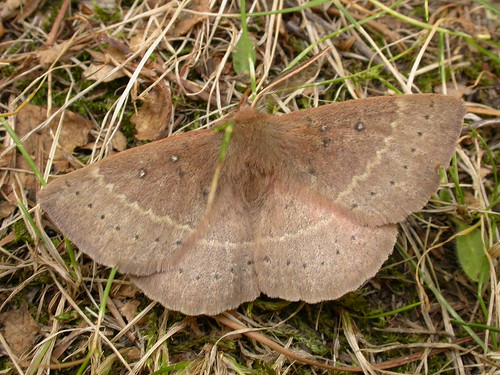Molecular phylogeny of Anthelidae and other bombycoid taxa (Lepidoptera: Bombycoidea) Systematic Entomology,Volume 33 Issue 1, Pages 190 - 209
ANDREAS ZWICK 1 , 2
1 CSIRO Entomology, Canberra, Australian Capital Territory, Australia and
2 School of Botany and Zoology, The Australian National University, Canberra, Australian Capital Territory, Australia
Abstract.
Based on DNA sequences of the fusion protein carbamoylphosphate synthetase/aspartate transcarbamylase/dihydroorotase (CAD; 680 bp) and elongation factor-1a (Ef-1a; 1240 bp); the first molecular phylogeny of the moth family Anthelidae and its placement within the Bombycoidea sensu Brock (1971) (¼ bombycoid complex sensu Minet, 1994) is proposed. The results strongly support the monophyly of the family Anthelidae and its subfamilies Munychryiinae and Anthelinae, but demonstrate the vast polyphyly of its main genus Anthela Walker, 1855. The proposed phylogeny suggests that grass feeding, as apparent from some pest records, probably is an ancestral trait within the subfamily Anthelinae. Evolutionary relationships of the family Anthelidae and of most parts of the Bombycoidea remain obscure. However, the results contradict many of the widely accepted phylogenetic hypotheses within the Bombycoidea proposed by Minet (1994: Entomologica scandinavica, 25, 63–88). The Brahmaeidae are paraphyletic relative to the Lemoniidae (syn.nov.), and the current concept of Bombycidae is polyphyletic, with the bombycid subfamily Apatelodinae being part of a monophylum comprising Brahmaeidae / Lemoniidae, Eupterotidae and Apatelodidae (stat.rev.).
1 CSIRO Entomology, Canberra, Australian Capital Territory, Australia and
2 School of Botany and Zoology, The Australian National University, Canberra, Australian Capital Territory, Australia
Abstract.
Based on DNA sequences of the fusion protein carbamoylphosphate synthetase/aspartate transcarbamylase/dihydroorotase (CAD; 680 bp) and elongation factor-1a (Ef-1a; 1240 bp); the first molecular phylogeny of the moth family Anthelidae and its placement within the Bombycoidea sensu Brock (1971) (¼ bombycoid complex sensu Minet, 1994) is proposed. The results strongly support the monophyly of the family Anthelidae and its subfamilies Munychryiinae and Anthelinae, but demonstrate the vast polyphyly of its main genus Anthela Walker, 1855. The proposed phylogeny suggests that grass feeding, as apparent from some pest records, probably is an ancestral trait within the subfamily Anthelinae. Evolutionary relationships of the family Anthelidae and of most parts of the Bombycoidea remain obscure. However, the results contradict many of the widely accepted phylogenetic hypotheses within the Bombycoidea proposed by Minet (1994: Entomologica scandinavica, 25, 63–88). The Brahmaeidae are paraphyletic relative to the Lemoniidae (syn.nov.), and the current concept of Bombycidae is polyphyletic, with the bombycid subfamily Apatelodinae being part of a monophylum comprising Brahmaeidae / Lemoniidae, Eupterotidae and Apatelodidae (stat.rev.).


沒有留言:
張貼留言